The story of my pollinator garden
I’m not exaggerating when I say that creating this pollinator garden is one of the best decisions I ever made, and that it has changed my life.
Turning lemons into lemonade
In January of 2017, we lost a tree in our front yard, and I had to figure out what to do with this new empty space. I decided to read some new-ish gardening books for ideas. Bringing Nature Home (at the Ottawa Public Library), Planting in a Post-Wild World (at OPL), and Pollinators of Native Plants all begin with depressing stories of habitat loss and its effect on birds, bees and other wildlife. Thankfully, these books also offer hope. They share a similar message that native flora and fauna have evolved together and are dependent on each other, and we can help compensate for habitat loss by planting native plants in our yards.
I decided to follow suit and created a new garden specifically for pollinators. Even in its first year, my garden was a tremendous success – more than I ever imagined it could be. It makes me feel like I’m doing something tangible to help the environment because I can see the bees, butterflies, and birds right in front of my eyes. It has also been fascinating, educational, and even entertaining to observe the activity in the garden.
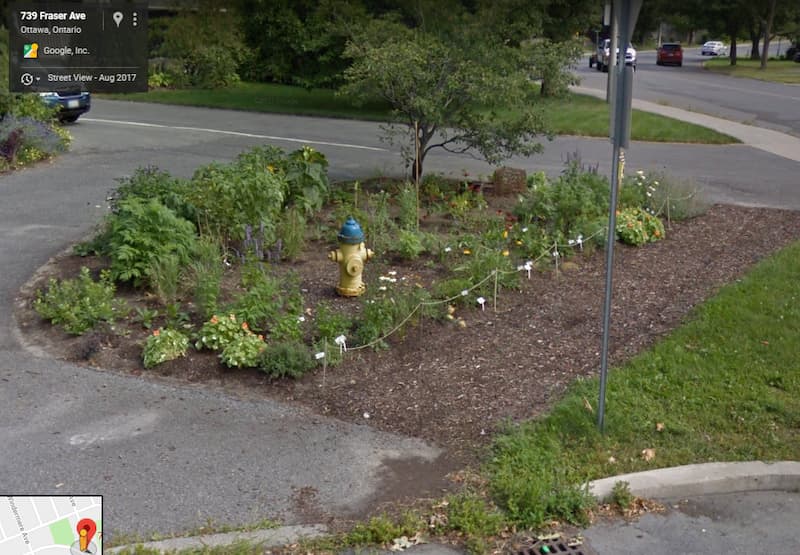
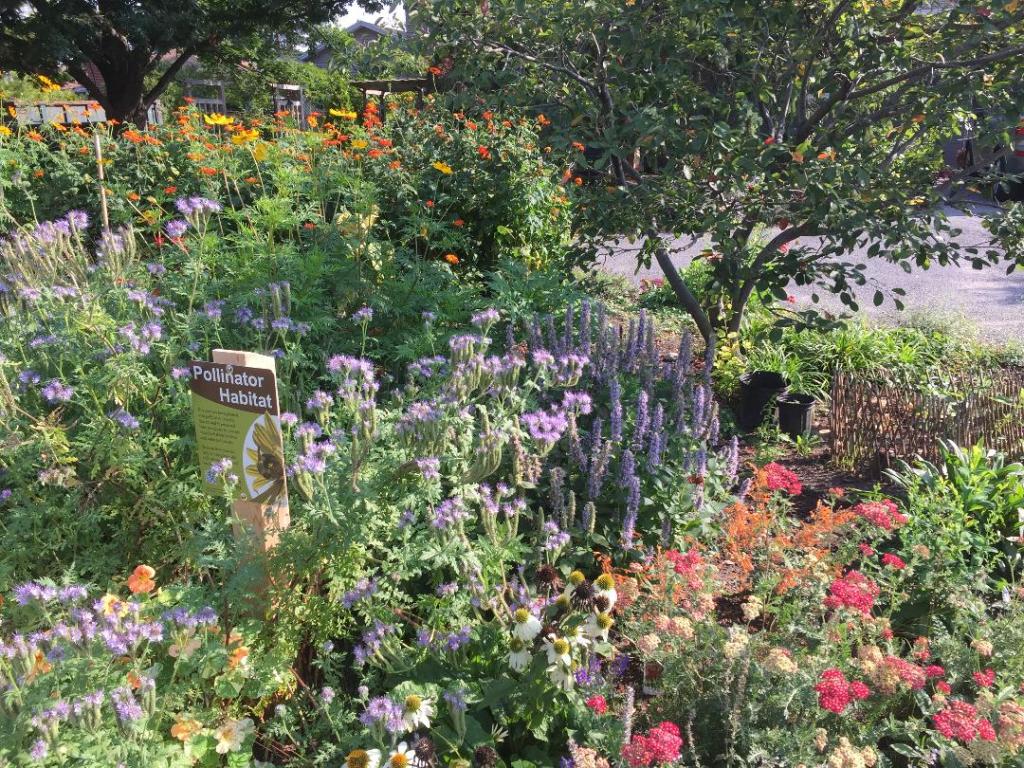
The bees move in
Starting in May, as soon as I started planting, we watched mining bees digging nests in the ground and collecting pollen from our new pussy willow shrubs. You can watch my video on YouTube of a mining bee excavating a nest. (In May of 2017, I had only begun to plant my pollinator garden, so this particular bee wasn’t in my yard because it. However, I noticed this bee because of my preceding pollinator gardening research. This bee was likely gathering nectar and pollen from the native shrubs and trees already in my yard and nearby yards, such as pussy willow, red maple, wild plum, wild cherry, hawthorn, and service berry.)
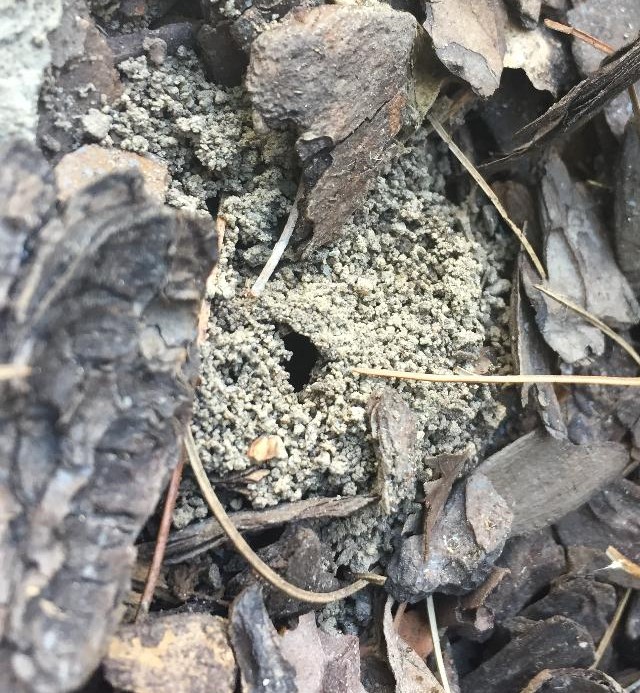
Shortly after, large bumblebee queens visited our chokecherry and crabapple trees, and flew back-and-forth close to the ground searching for nest sites. Tiny carpenter bees dug nests out of the previous years’ coneflower stems. Leaf-cutter bees cut pieces of leaves, and carried them to their nests between rocks in a dry stone wall.
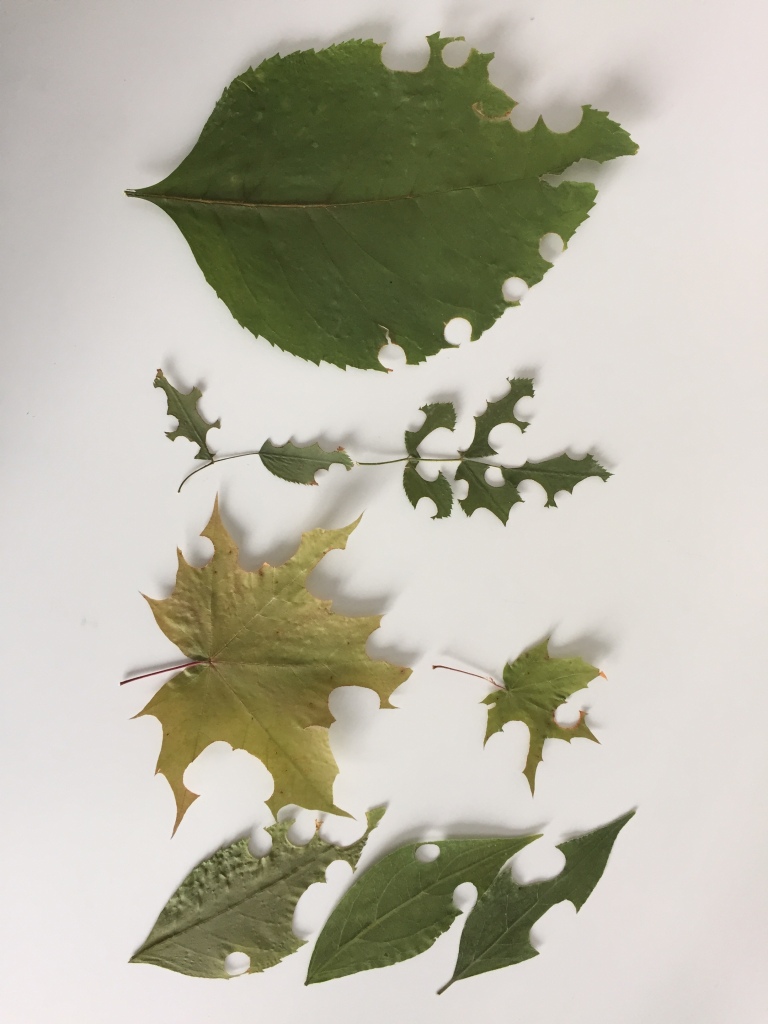
Male wool carder bees hovered around patches of penstemons, while the females scraped balls of fuzz from pearly everlasting leaves to line their nests. In the summer, many worker bumblebees covered anise hyssop flowers drinking nectar, and noisily buzz-pollinated anemones in the fall (video on YouTube).
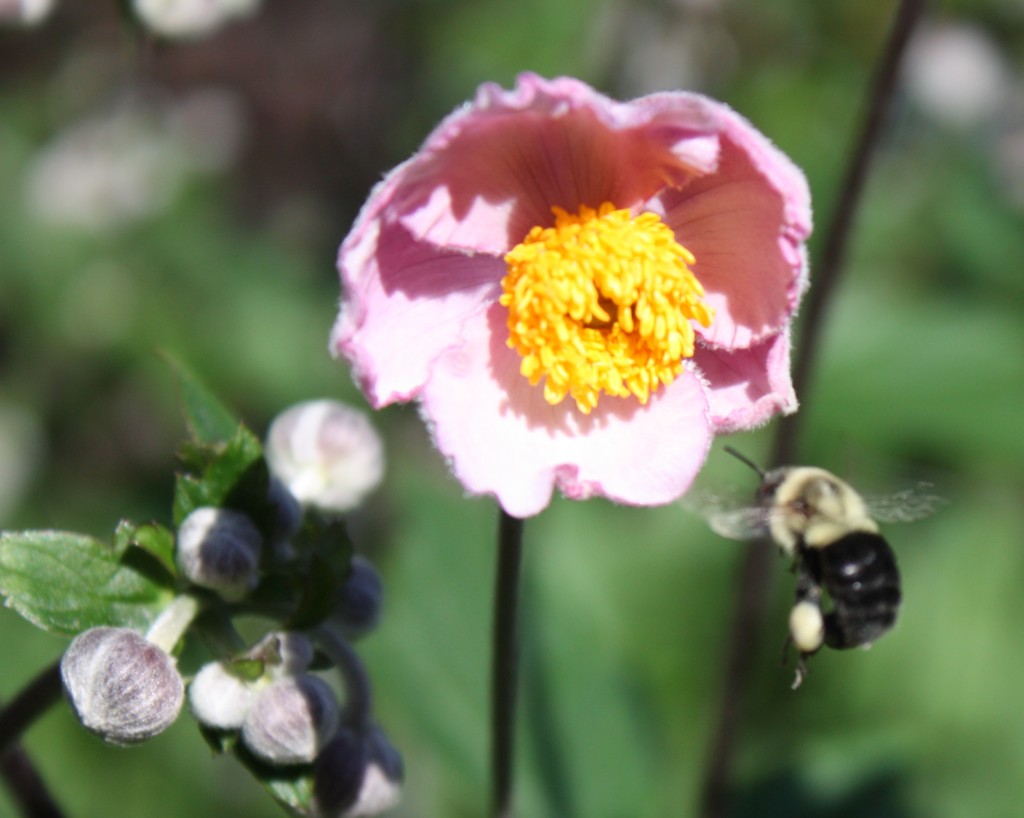
In September, we marveled at the number and variety of pollinators on zigzag goldenrod (YouTube video). (Goldenrod’s large, sticky pollen doesn’t cause allergies. Ragweed, which blooms at the same time, is the culprit; its fine, dusty pollen easily flies through the air and into our noses.)
Butterfly visitors
Butterflies also began visiting my garden. We found American Lady caterpillars hiding in webs on our patch of field pussytoes only a few weeks after they were planted. We found Black Swallowtail caterpillars on the rue and parsley host plants that I had planted for them.
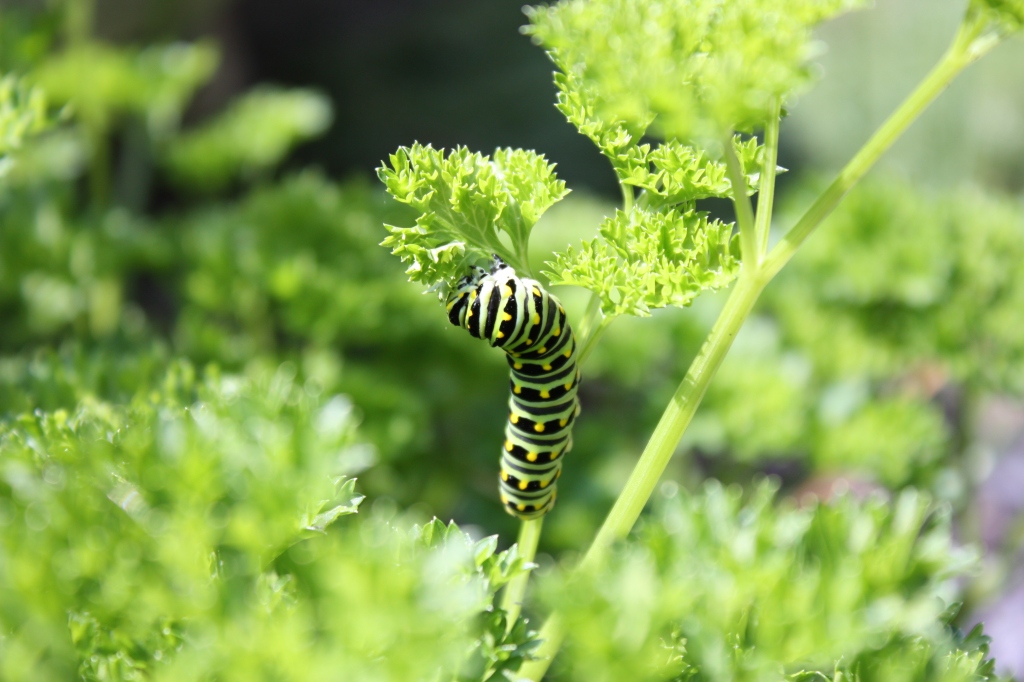
In a grand finale, in September of 2017, dozens of Monarchs and Painted Lady butterflies stopped to rest and eat during their migration. You can watch my YouTube video of them flitting around on our Mexican Tithonia ‘hedge’.

Isn’t it amazing! You never know what you’ll see in the garden.
Related: How to start a Beehive
About the Author:
My name is Berit Erickson and I’ve been a passionate gardener for the past 20 years. I live in Ottawa, Ontario, Canada, which is in zone 5. I consider myself pollinator and habitat gardening enthusiast. I’ve read a lot, and I’ve accumulated 2 years of pollinator gardening experience. Berit’s Web site is TheCornerPollinator.net







Leave a Reply
You must be logged in to post a comment.